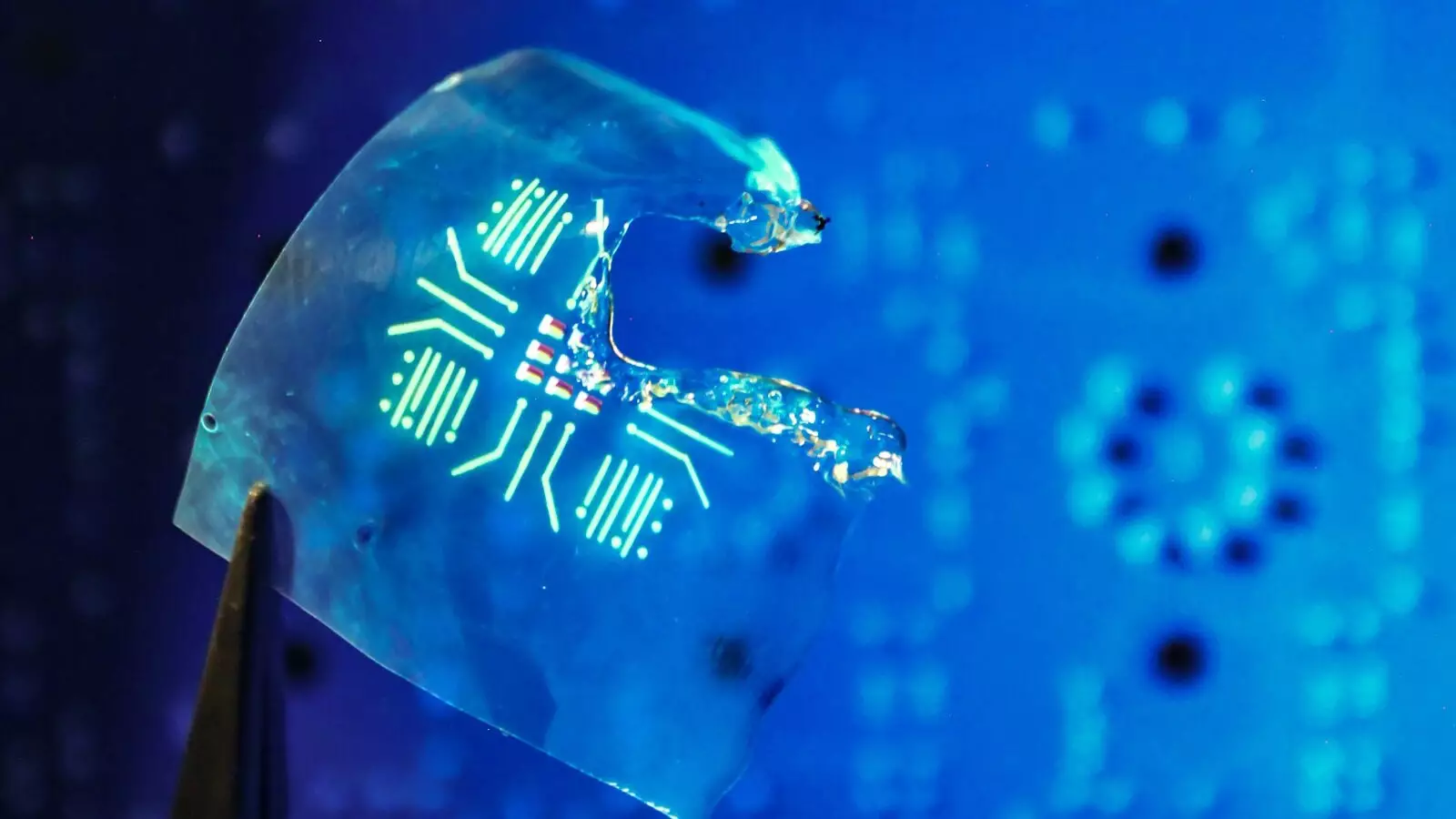In the era of advanced electronics, luminescent polymers are emerging as crucial components in devices ranging from car navigation systems to smartphone displays. These materials boast not only flexibility and durability but also exceptional light-emitting properties. The exquisite combination of structure and functionality has garnered attention across various sectors, including consumer electronics and medical imaging. Yet, as impressive as these materials are, there lies a pressing issue at the core of their lifecycle. The inevitable fate of these polymers—most of which end their journey in landfills—raises significant environmental concerns and challenge the sustainability of our rapidly digitizing world.
The Environmental Toll of Electronic Waste
Electronic waste, commonly known as e-waste, presents a monumental challenge: it’s estimated that millions of tons of electronic devices are discarded annually, leading to unsightly landfills that contain hazardous materials. These old gadgets not only occupy physical space but also contribute to serious environmental degradation. Current recycling methods for electronic components are often inefficient and energy-intensive, making it difficult to reclaim valuable materials like luminescent polymers. This complexity stems largely from the advances in polymer chemistry, which, while facilitating excellent performance, make it challenging to break these materials down for recycling. Without significant innovation in design and methodology, the ecological footprint of electronic waste will continue to expand unchecked.
Innovative Solutions for a Sustainable Future
The collaboration between researchers at various prestigious institutions, including the U.S. Department of Energy’s Argonne National Laboratory, aims to turn the tide against this growing e-waste challenge. By integrating a unique chemical component—tert-butyl ester—into luminescent polymers, the team has unlocked an innovative way to produce materials that are both highly effective in light emission and capable of depolymerization. This advancement is significant: it not only enables the breakdown of these polymers into their component parts after their useful life but also maintains their performance efficiency, as evidenced by a remarkable electroluminescence rate of 15.1%. This figure marks a tenfold increase compared to existing biodegradable luminescent materials, demonstrating a crucial intersection of performance and sustainability.
Designing for the Future
The most profound aspect of this research is the philosophical shift it proposes in electronic design. Historically, sustainability was often sidelined in favor of immediate functionality and aesthetics. However, the acknowledgment by researchers that future electronics must be designed with recyclability in mind opens up new avenues for innovation in the tech industry. As articulated by Jie Xu, project lead at Argonne, this work “serves as an important benchmark in addressing the urgent need for sustainability.” Generating excitement for this redefined approach to electronics promises not only to lessen the burden of waste but also to inspire future research and technological advancements that prioritize the planet.
From Lab to Market: the Path Ahead
As the team looks to transition this groundbreaking polymer from laboratory testing to real-world applications, the implications grow broader. The potential to integrate this technology into everyday electronics like smartphones and televisions hints at a monumental shift in how we perceive and produce technology. While researchers are clear that this marks only the beginning of their journey, they remain optimistic about the trajectory. With e-waste projected to represent a $260 billion industry by 2032, the economic motivation for sustainable practices could encourage widespread adoption of such innovative materials. This momentum is something that must be capitalized upon—each step toward sustainability in technology manufacturing can dramatically alter our environmental landscape.
A Call to Arms for Sustainable Electronics
As society becomes increasingly reliant on advanced electronics, the urgency surrounding sustainable practices must not be overlooked. With inspiring advancements coming from dedicated research teams, the future of luminescent materials looks promising. By prioritizing an eco-conscious strategy during the design phases, there lies an exceptional opportunity to reshape our relationship with technology—and with the environment. The design and development of these innovative polymers underscore the essential responsibility of innovators: to ensure that progress does not come at the cost of the planet. In this quest for sustainable technology, every initiative counts, compelling a call for industry-wide action.

